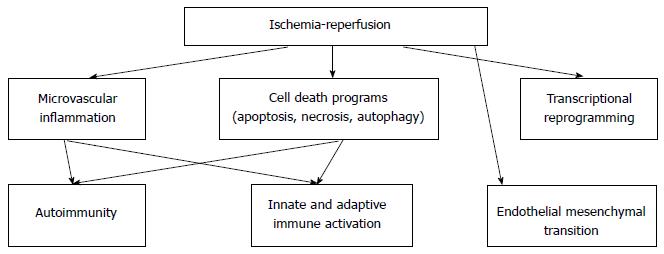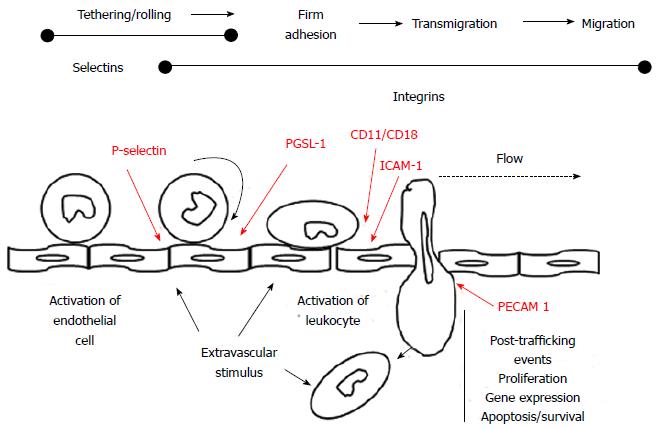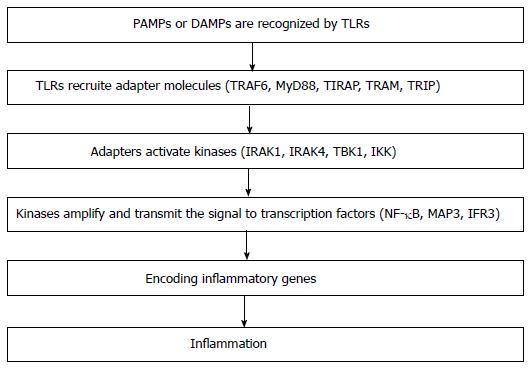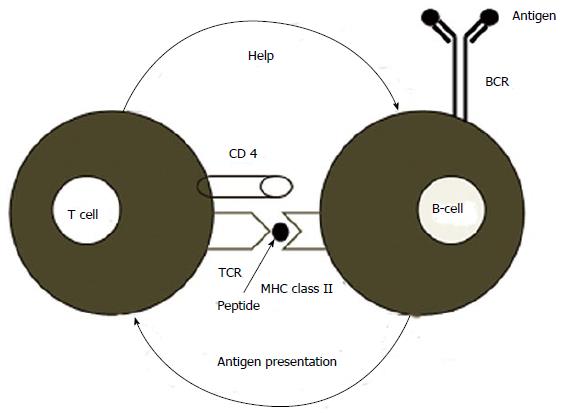Copyright
©The Author(s) 2015.
World J Transplant. Jun 24, 2015; 5(2): 52-67
Published online Jun 24, 2015. doi: 10.5500/wjt.v5.i2.52
Published online Jun 24, 2015. doi: 10.5500/wjt.v5.i2.52
Figure 1 Biological consequences of ischemia-reperfusion.
Figure 2 Rolling, firm adhesion and diapedesis of leukocytes.
Leukocyte rolling is initiated by increase in endothelial P-selectin and its interaction with the leukocyte receptor PGSL-1; integration of integrins CD11a/CD18 with endothelial ICAM-1 results in leukocyte adherence; Leukocyte transmigration, facilitated by PECAM-1. PGSL-1: P-selectin glycoprotein 1-ligand; ICAM-1: Intercellular adhesion molecule 1; PECAM-1: Platelet endothelial cell adhesion molecule-1.
Figure 3 Schematic view of innate inflammatory response.
PAMPs: Pathogen associated molecular patterns; DAMPs: Danger associated molecular patterns; TLRs: Toll-like receptors; TRAF6: TNF receptor-associated factor 6; MyD88: Myeloid differentiation primary response 88; TIRAP: Toll-interleukin 1 receptor (TIR) domain containing adaptor protein; TRAM: TRIF-related adaptor molecule; TRIF: TIR domain containing adaptor protein inducing interferon β; IRAK1: Interleukin 1- receptor-associated kinase 1; TBK1: TANK binding kinase 1; IKK: Inhibitor of nuclear factor kappa-B kinase; NFκB: Nuclear factor kappa B; MAP3: MAP3 kinase; IFR3: Interferon regulatory factor 3.
Figure 4 Adaptive immunity.
Interrelationship between T and B cells. TCR: T cell receptor; MHC: Major histocompatibility complex; BCR: B cell receptor.
- Citation: Salvadori M, Rosso G, Bertoni E. Update on ischemia-reperfusion injury in kidney transplantation: Pathogenesis and treatment. World J Transplant 2015; 5(2): 52-67
- URL: https://www.wjgnet.com/2220-3230/full/v5/i2/52.htm
- DOI: https://dx.doi.org/10.5500/wjt.v5.i2.52












